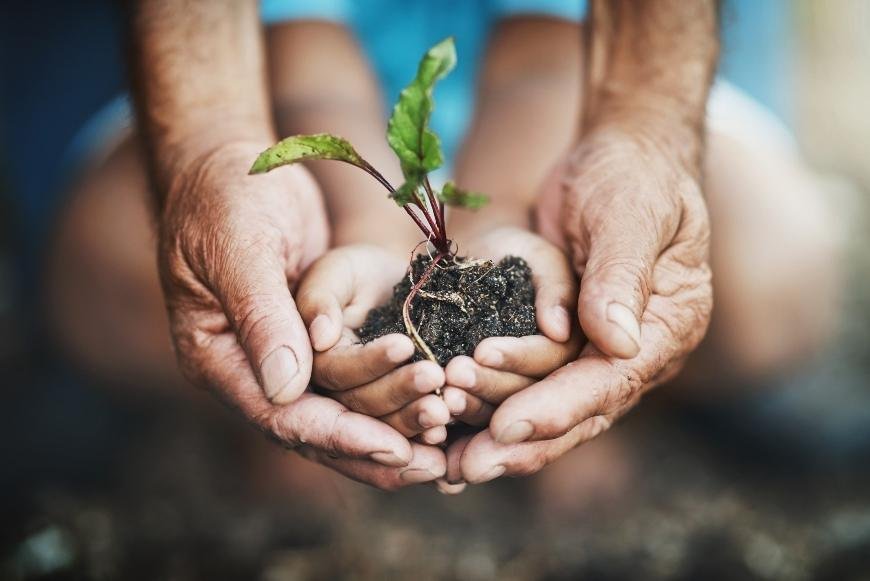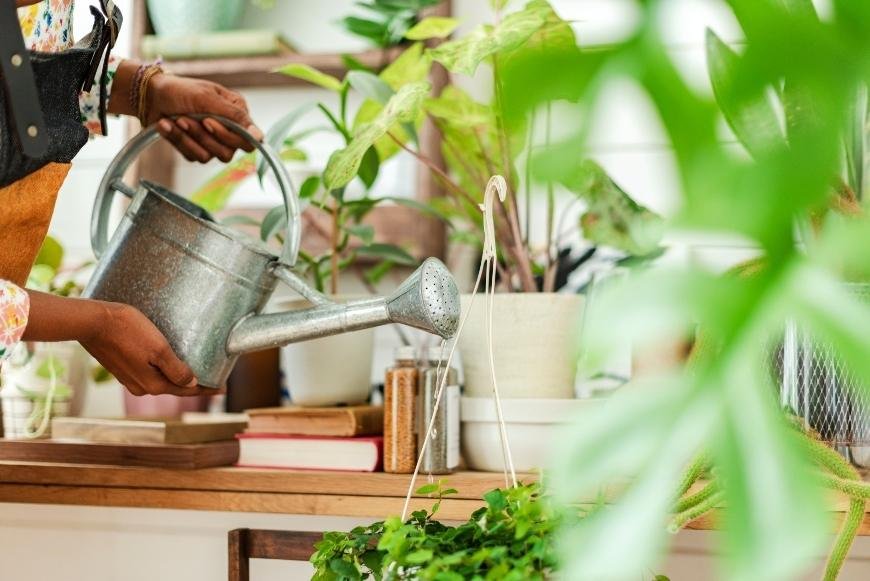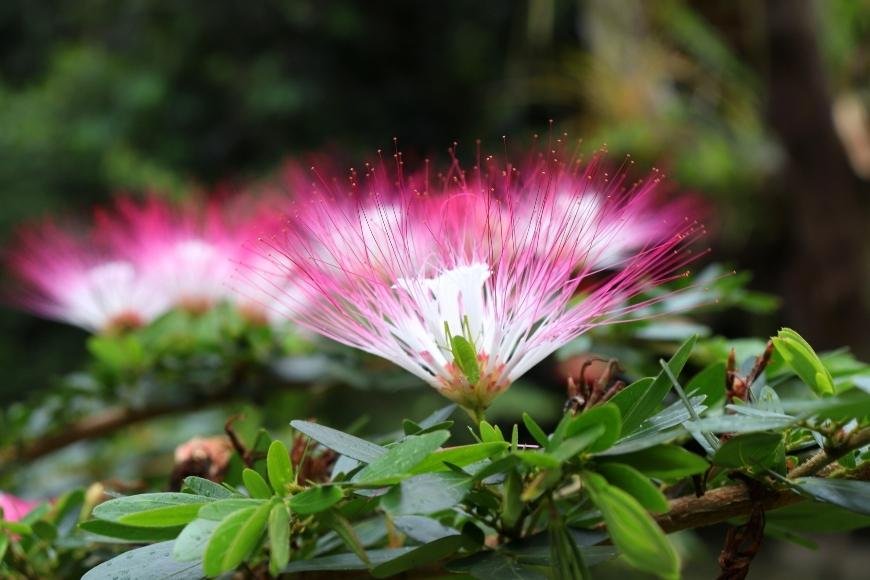How to grow Bobinsana?
If you're eager to gain knowledge about cultivating Bobinsana, this guide is for you.

This exotic flora, scientifically termed Calliandra angustifolia, originates from the Peruvian Amazon and is steeped in a long history of utilization within Peru's herbal medicinal traditions. As an entheogenic plant teacher and general energizing tonic, it's no wonder that more people are becoming intrigued by its potential.
In this comprehensive guide on how to grow Bobinsana, we will cover everything from choosing the ideal growing location for your seeds to understanding proper watering and fertilization techniques. We'll also delve into essential pruning practices and methods for controlling pests and diseases that may threaten your plants' health.
Finally, we'll explore harvesting techniques and effective storage options so you can fully enjoy the benefits of your homegrown Bobinsana tinctures or incorporate them into traditional Ayahuasca recipes.
Table of Contents:
- Choosing a Growing Location
- Planting Bobinsana Seeds
- Watering and Fertilizing
- Pruning and Training
- Controlling Pests and Diseases
- Harvesting Bobinsana
- Storing Bobinsana
- Frequently Asked Questions How to Grow Bobinsana?
- Conclusion
1. Choosing a Growing Location
Growing Bobinsana (Calliandra angustifolia), an essential plant in Peruvian herbal medicine systems, requires careful consideration of the location to ensure optimal growth and potency. The right environment will help you produce high-quality Bobinsana tinctures and teas, which are known for their general energizing tonic effects and use in Ayahuasca recipes.
Climates Suitable for Growing Bobinsana
Native to the Peruvian Amazon, particularly the Ucayali area, this tree thrives in tropical climates with plenty of rainfall. It is crucial to replicate these conditions as closely as possible when growing Bobinsana outside its natural habitat. Here are some factors to consider when choosing a location:
- Temperature: As a tropical plant, Bobinsana prefers warm temperatures ranging from 70°F (21°C) to 85°F (29°C). Avoid exposing your plants to frost or extreme heat.
- Light: This tree produces well under partial shade but can also tolerate full sunlight if acclimated gradually. Ensure that your chosen spot receives at least six hours of direct sunlight per day.
- Soil type: A well-draining soil rich in organic matter is ideal for growing healthy Bobinsana plants. Loamy or sandy soils amended with compost work best for promoting strong root development.
- Air circulation:The entire plant benefits from good air circulation; it helps prevent diseases caused by excess humidity while encouraging robust growth.
By selecting a suitable location that meets these criteria, you'll be well on your way to cultivating potent Bobinsana plants and reaping the benefits of this powerful plant teacher.
2. Planting Bobinsana Seeds
Growing your own Bobinsana bobinsana, or Calliandra angustifolia, starts with planting the seeds properly. This section will guide you through the process of preparing the soil and determining the right planting depth for optimal growth.
A. Preparing the Soil
The first step in planting Bobinsana seeds is to prepare a suitable growing medium. For the best results, mix equal parts of garden loam or topsoil with compost or aged manure to create an optimal growing medium. To create an ideal mix, combine equal parts of:
- Garden loam or topsoil
- Sand (for drainage)
- Compost or aged manure (to provide nutrients)
In addition to providing nutrients, a slow-release fertilizer can be added to the mix in order to ensure that your plants receive adequate nutrition.
B. Soaking and Scarifying Seeds
Prior to sowing, it's essential to soak your Bobinsana seeds for at least 24 hours in warm water to soften their hard outer shells and promote germination. After soaking, gently scarify each seed by rubbing it between two pieces of sandpaper until its surface becomes slightly roughened; this helps increase water absorption during germination.
C. Sowing Depth and Spacing
To plant your prepared Bobinsana seeds, dig small holes about half an inch deep and place one seed per hole while maintaining a spacing of approximately three feet apart from each other; this ensures ample room for future growth as these tree semien species can grow quite large over time.
and seed treatment are crucial for successful germination and growth of your Bobinsana plants. With patience, care, and attention to detail, you'll be well on your way to cultivating these powerful in no time.
3. Watering and Fertilizing

Growing a healthy Bobinsana plant requires proper watering and fertilization techniques to ensure optimal growth. In this section, we will discuss the best practices for both watering and fertilizing your Bobinsana plants.
Watering
Bobinsana plants thrive in moist soil conditions, but it's essential not to overwater them as this can lead to root rot. Water your Bobinsana plants every 2-3 days during the growing season, ensuring that the top inch of soil is dry before each watering to promote oxygenation and prevent root rot. Make sure that the top inch of soil is dry before you water again. This allows oxygen to reach the roots while preventing excess moisture from accumulating.
Tips for Proper Watering:
- Use room temperature or slightly warm water - cold water can shock the plant's roots.
- If possible, use rainwater or filtered tap water as they contain fewer chemicals than regular tap water.
- Avoid getting leaves wet when watering; focus on saturating only the soil around your plant's base.
Fertilizing
To support strong growth and development of your Bobinsana tree semein, using appropriate fertilizer is crucial. As part of Peruvian herbal medicine systems, these master plants require specific nutrients found in organic fertilizers like composted manure or worm castings mixed with cane sugar called aguardiente which provides extra energy needed by entire plant structure including Calliandra angustifolia flowers production process where harmala alkaloids are concentrated most heavily within their petals tissues cells structures themselves.
Tips for Effective Fertilization:
- Fertilize once per month during active growing periods (spring through summer).
- Use a balanced, slow-release organic fertilizer with equal parts nitrogen, phosphorus, and potassium (N-P-K) for general energizing tonic effect on your plant.
- Always follow the manufacturer's instructions when applying fertilizers to avoid over-fertilization or nutrient burn.
In addition to proper watering and fertilization techniques, it is essential to monitor your Bobinsana plants' overall health. Regularly check for signs of stress or disease so you can address any issues promptly. By following these best practices in caring for your Bobinsana plants, you will be well on your way towards enjoying their many benefits as part of traditional Peruvian Amazon prepare medicine systems like ayahuasca recipes incorporating bark tincture from this powerful plant teacher found throughout Ucayali area rainforests environments.
4. Pruning and Training
Pruning and training your Bobinsana plants are essential steps to maximize their growth potential and ensure a healthy harvest. Proper pruning will encourage branching, allowing the plant to produce more leaves, flowers, and seeds while also improving air circulation around the entire plant.
A. When to Prune
The ideal time for trimming is while the plant is in its vegetative growth phase, when it's concentrating on forming foliage. It would be best if you started pruning once your Bobinsana reaches about 1 meter in height or has at least six sets of leaves.
B. How to Prune
- Remove lower branches: Begin by removing any small branches growing from the base of the trunk up to about one-third of its total height. This helps direct energy towards producing new shoots higher up on the tree where sunlight exposure is better.
- Cut back long branches: Trim back any overly long or leggy branches that may be competing with other parts of your Bobinsana for light resources.
- Maintain shape: Regularly prune away dead or damaged foliage throughout each season as needed so that it doesn't take valuable nutrients away from healthier parts of your plant.
C. Training Techniques
In addition to regular pruning, there are several training techniques you can employ with your Bobinsana plants:
- LST (Low-Stress Training): This method involves gently bending stems downward using soft ties without causing damage to the plant. LST can help increase light exposure and promote even growth throughout your Bobinsana.
- Super Cropping: This technique involves pinching or crushing the stem's soft inner tissue, causing it to bend without breaking. This stimulates new branching and helps create a bushier appearance for your plant.
By following these pruning and training techniques, you'll be well on your way to cultivating healthy, vibrant Bobinsana plants that will reward you with an abundance of leaves, flowers, and seeds for use in Peruvian herbal medicine systems, as well as potent bobinsana tinctures.
5. Controlling Pests and Diseases
Growing Bobinsana plants can be a rewarding experience, but it's essential to keep an eye out for common pests and diseases that may affect their health. By identifying these issues early on, you can take action to control them without resorting to chemical pesticides or fungicides.
Common Pests Affecting Bobinsana Plants
- Aphids: These small insects feed on plant sap, causing leaves to curl and become discolored. To control aphids naturally, introduce beneficial insects like ladybugs or lacewings into your garden or use a mild soap solution spray.
- Mites: Mites are tiny arachnids that also feed on plant sap, leading to yellowed leaves and stunted growth. Control mites by releasing predatory mites such as Phytoseiulus persimilis or spraying with neem oil.
- Caterpillars: Caterpillars can cause significant damage by eating the foliage of your Bobinsana plants. Handpick caterpillars from the plants regularly or use organic insecticides containing Bacillus thuringiensis (Bt) for effective control.
Diseases That Can Impact Your Bobinsana Plant Growth
- Fungal infections: Fungi like powdery mildew and leaf spot can lead to discolored leaves and reduced vigor in your Bobinsana plants. Prevent fungal infections by ensuring proper air circulation around the plants, avoiding overhead watering, and using organic fungicides if necessary.
- Bacterial infections: Bacterial blight is another disease that affects many plants, including Bobinsana. Symptoms include water-soaked spots on leaves and stems that eventually turn brown or black. To prevent bacterial infections, maintain good sanitation practices in your garden and avoid overwatering.
By regularly monitoring your Bobinsana plants for signs of pests and diseases, you can take action to control these issues before they become severe problems. Remember to always opt for natural methods whenever possible to protect the delicate balance of harmala alkaloids found within the plant's tissues.
6. Harvesting Bobinsana
Growing your own Bobinsana plants is a rewarding experience, but knowing when and how to harvest them is crucial for obtaining the best results. When the time is right, we'll provide advice on how to gather and store your Bobinsana.
When to Harvest
The ideal time to harvest Bobinsana varies depending on which part of the plant you intend to use. The entire plant, including leaves, stems, and roots can be used in various Peruvian herbal medicine systems. However, it's essential to know that different parts of the tree produce distinct effects:
- Bark: Known for its general energizing tonic properties and often used in making Bobinsana tinctures.
- Leaves: Typically utilized in Ayahuasca recipes due to their content of harmala alkaloids.
- Roots: Often employed by shamans as a "plant teacher," providing spiritual guidance during ceremonies.
To ensure maximum potency and effectiveness from each part of the plant, consider these guidelines when harvesting:
- Bark: Harvested from mature trees (at least five years old) during dry seasons when sap production is minimal.
- Foliage: Gather fresh leaves throughout the year; however, they are most potent just before flowering occurs (typically between January and March).
- Roots: Best harvested during the dry season when they are richest in active compounds.
7. Storing Bobinsana

After harvesting your Bobinsana plants, it's essential to store them properly in order to maintain their freshness and potency over time. In this section, we'll outline the best methods for storing harvested Bobinsana plants.
Preparing Your Harvested Plant Material
To ensure that your Bobinsana remains potent and effective, you should first dry the entire plant material thoroughly before storage. Hang the branches in a place with good air flow, out of direct sunlight, until they are totally dry. Once dried, the leaves and blossoms should be detached from the stems; any damaged or discolored portions must be discarded.
Drying Bark for Tinctures
If you plan on making bobinsana tinctures, it is important to also prepare and dry the bark separately. Carefully peel off strips of bark from freshly harvested branches using a sharp knife or peeler. Lay these strips out flat on a clean surface with good air circulation until they become brittle enough to snap easily when bent.
Packing Dried Materials for Storage
- Glass Jars: Store dried leaves, flowers, and bark pieces in dark-colored glass jars with tight-fitting lids to protect them from light exposure which may degrade their active compounds such as harmala alkaloids found within Peruvian herbal medicine systems like Ayahuasca recipes.
- Airtight Containers: Alternatively, use opaque plastic containers or vacuum-sealed bags to keep out air and moisture that can cause mold or spoilage.
- Labeling: Clearly label your containers with the plant name, date of harvest, and any other relevant information for future reference.
Storing Tinctures
If you have prepared a bark tincture, it should be stored in dark-colored glass bottles with dropper tops. Store the bottles in a dim, cool area out of direct sunlight or other sources of warmth to ensure potency over time. As an added precaution, consider adding a small amount of cane sugar called aguardiente as a natural preservative to extend the shelf life of your homemade bobinsana tinctures.
Frequently Asked Questions How to Grow Bobinsana?
What is the description of Bobinsana?
Bobinsana is a shrubby tree native to South America that grows up to 4-6 meters tall. It has smooth grey bark with compound leaves consisting of small leaflets. The plant produces beautiful pink-to-red flowers in clusters which later develop into elongated seed pods containing numerous seeds.
What is Calliandra angustifolia used for?
Calliandra angustifolia, commonly known as Bobinsana, has various traditional uses among indigenous communities in South America. It's primarily employed as an herbal remedy for treating inflammation, arthritis pain relief, improving digestion and blood circulation; it's also considered a mild stimulant with potential psychoactive effects when consumed in larger quantities.
Conclusion
Growing bobinsana can be a rewarding and enjoyable experience. With proper planning, the right location, and careful attention to watering, fertilizing, pruning and training your plants you will be able to grow healthy Bobinsana that is ready for harvesting. Once harvested correctly it can then be stored properly so that its effects last longer than ever before. So why not give growing Bobinsana a try? You won't regret it.


































































































































